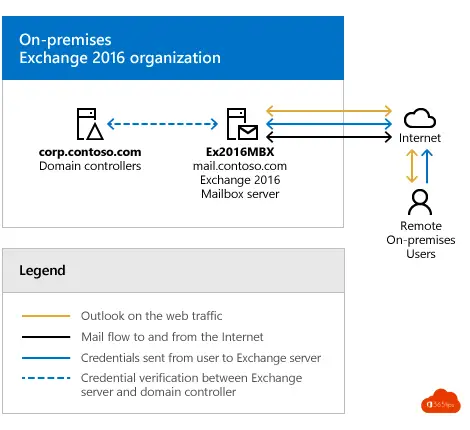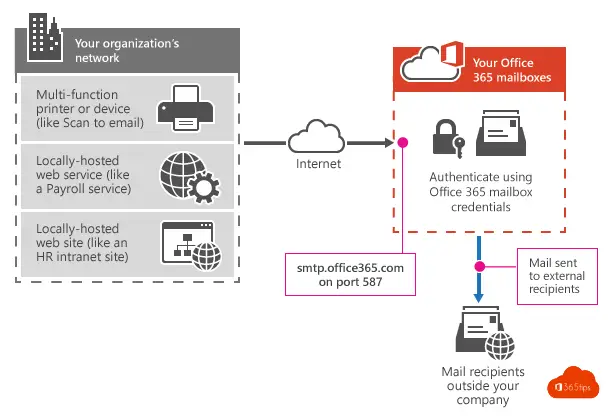Why and when do you choose a Microsoft Exchange Hybrid configuration?

Why a Exchange Hybrid?
- A Hybrid Exchange environment allows you to take your local environment and the cloud environment together as a single mail organization.
- This is practical because the management is on-premises (Active Directory) and the maillbox management can easily be done through a Hybrid environment towards . Office 365 Exchange Online.
- Hybrid = Recipient management on-premises, ACL (permissions) on-line.
The main advantages of a Hybrid Exchange
- Hybrid exchange enables secure e-mail routing between your local and Exchange Online -organizations. This cannot be done easily with an SMTP gateway.
- Administrators can use powerful and familiar Exchange management tools to move users to Exchange Online and manage users.
- Printers using the Exchange environment today continue to relay in exactly the same way as before.
- Hybrid Exchange is a requirement to migrate as easily as possible without user impact and reconfiguration of each device. With a hybrid migration, only a username & password needs to be pressed after the mailbox move.
Why not choose a hybrid Exchange?
- If you want to migrate quickly to Exchange Online .
- If Security highly regarded in your organization.
- If you have no knowledge of Exchange.
Don't you want a Hybrid Exchange?

1. Adjust your mail flow
- Migrate all mail flow from on-premise to Office 365. So all scanners, copiers, applications dedicated to Office 365.
2. Send your mail via SMTP authentication (recommended).
- You want to send e-mail from a hosted application, service or third-party device.
- You want to send e-mail to people inside and outside your organization.
- Let your device authenticate directly to the Office 365 mailbox and send out your mails via SMTP auth submission.
- Benefit: Total control of mail flow & mailbox visibility.
- Disadvantage: There is a license attached to each user mailbox.
| Application or printer settings | Value |
|---|---|
| Server/smart host | smtp.office365.com |
| Port | Port 587 (recommended) or port 25 |
| TLS/StartTLS | Enabled |
| E-mail address and password | use your login from your mailbox |

There are also 2 other methods, these are only recommended if the above options are not sufficient.
- Option 2: Send your mails directly to O365 over port 25.
- It is best to take this option only if option 1 cannot be done.
- Option 3: Configure a connector to send out mails to Office 365. (relay)
- It is best to take this option only if options 1 and 2 cannot be done.
- Technical content & configuration read here!
3. Build off your Hybrid Exchange
- Remove roles from your Exchange servers so there are no active roles.
- Remember that if you only break out your Exchange and you use Azure AD connect in Hybrid Mode you always have to set e-mail addresses, policies, and so much more manually on the AD objects. This takes a lot more time and doesn't guarantee typos etc.
- Be sure to read! https://365tips.be /2020/02/16/why-choose-for- exchange-hybrid
4. Recommended Exchange Hybrid only management, no hybrid mail flow.
- If you still want to do management you can install a Exchange 2016 server with a free license. (for Exchange)
- The key can be obtained at: https://aka.ms/hybridkey
- Unfortunately, this is not (yet) for Exchange 2019. Well 2016.

Bonjour,
Quels sont les champs administrables depuis l'exchange On premise et pas administrable depuis l'exchange Online ?
Hybrid Exchange can be difficult for management. Bottom-line here is: Management of user properties is done from Active-Directory. Access Control lists and permissions from Exchange Online Management.